Using UTM tags in advertising campaigns allows you to analyze their effectiveness.
If you need to replicate ads, the data should be pulled into the tags from the account automatically. To do this, use dynamic tags.
Do not shorten a link with dynamic tags when using in BotHelp.
Static UTM Tags & Dynamic Parameters
Main types of static labels:
|
utm_source
|
specific name of the traffic source |
| utm_medium | traffic source type |
| utm_campaign | Advertising campaign name |
| utm_content | defines different versions of advertising (for example, two different links in one advertising letter) |
| utm_term |
indicates a specific keyword (for AdWords) or the date of sending an email with an advertising link |
To add a tag, simply paste it at the end of the landing page link, separating them with the "&" symbol. Detailed settings are described in our article .
You can create a tag manually or using special constructors from Google or Tilda .
List of dynamic parameters:
| {ad_id} |
ad id |
| {campaign_id} |
advertising campaign identifier |
| {campaign_name} | campaign name from the advertising account |
| {client_id} | Client ID (for agency accounts) |
| {platform} | platforms from which clicks on ads were made |
| {keyword} or {search_phrase} | key phrases that led to the click through to the ad. There can be several such phrases - a maximum of 3 phrases will be transmitted, with a total length of no more than 200 characters; the parameters are equivalent, use only one of them |
| {random} |
random number |
To use dynamic labels, you need to specify the parameter you want instead of a specific value.
You can also use various online link building services to create a link.
How do you use dynamic tags?
1. In the VKontakte advertising account, create an advertising campaign:
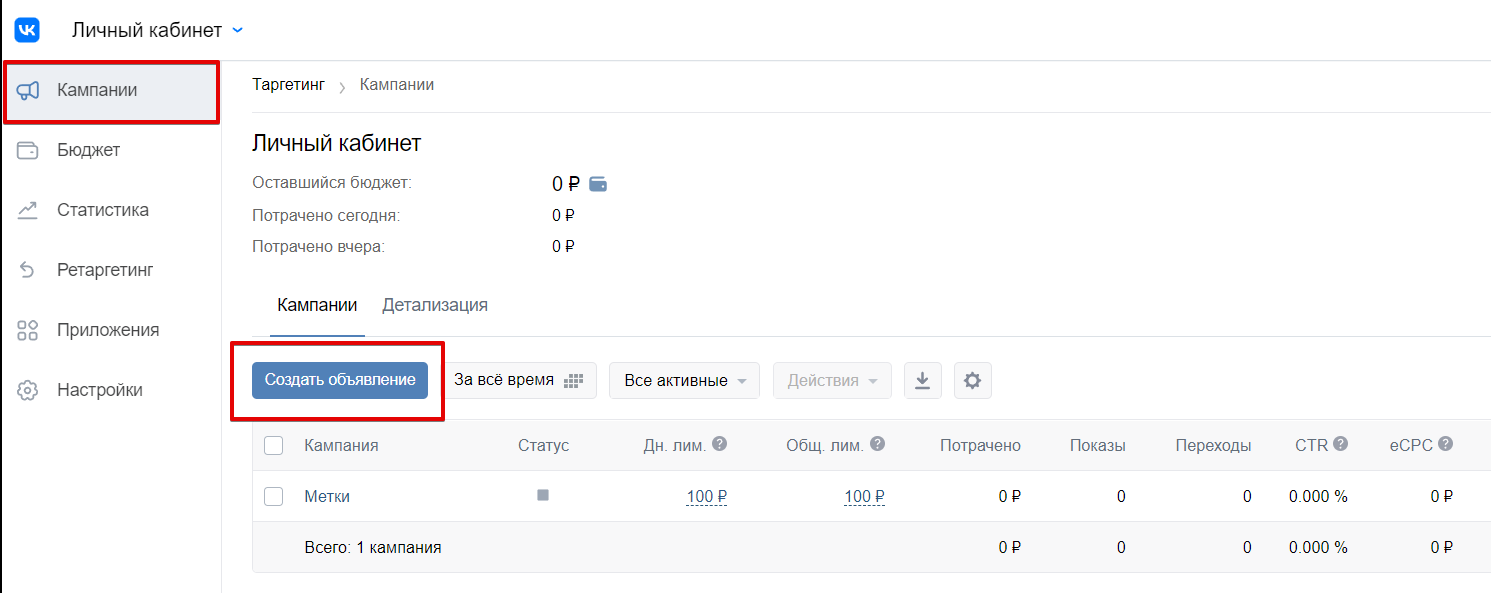
In an already created campaign, you can create a different number of ads:
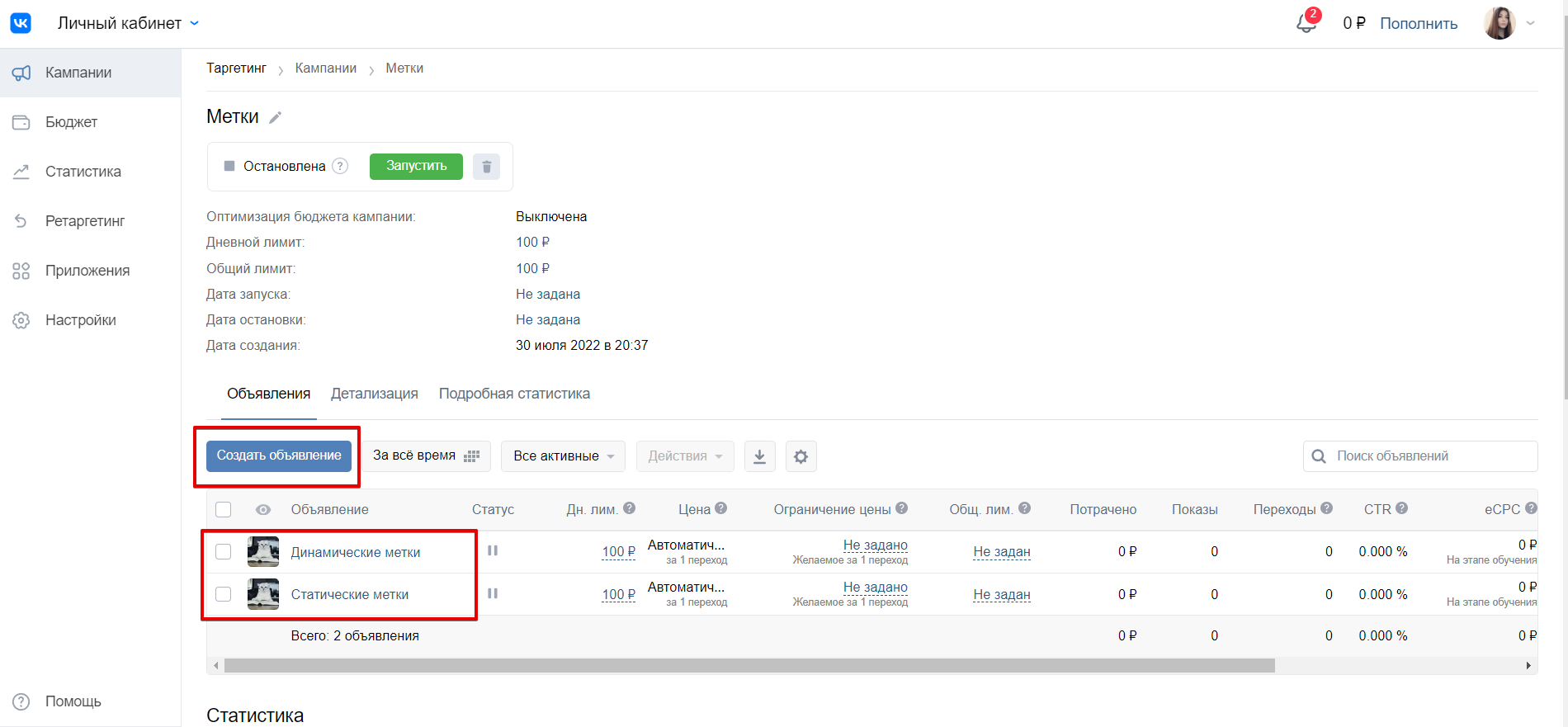
2. Set up UTM tags
Static UTM tags always specify the same constants.
Example : https://mnlp.cc/mini?domain=okrudman&id=8&utm_source=vk&utm_medium=trafik&utm_campaign=astah
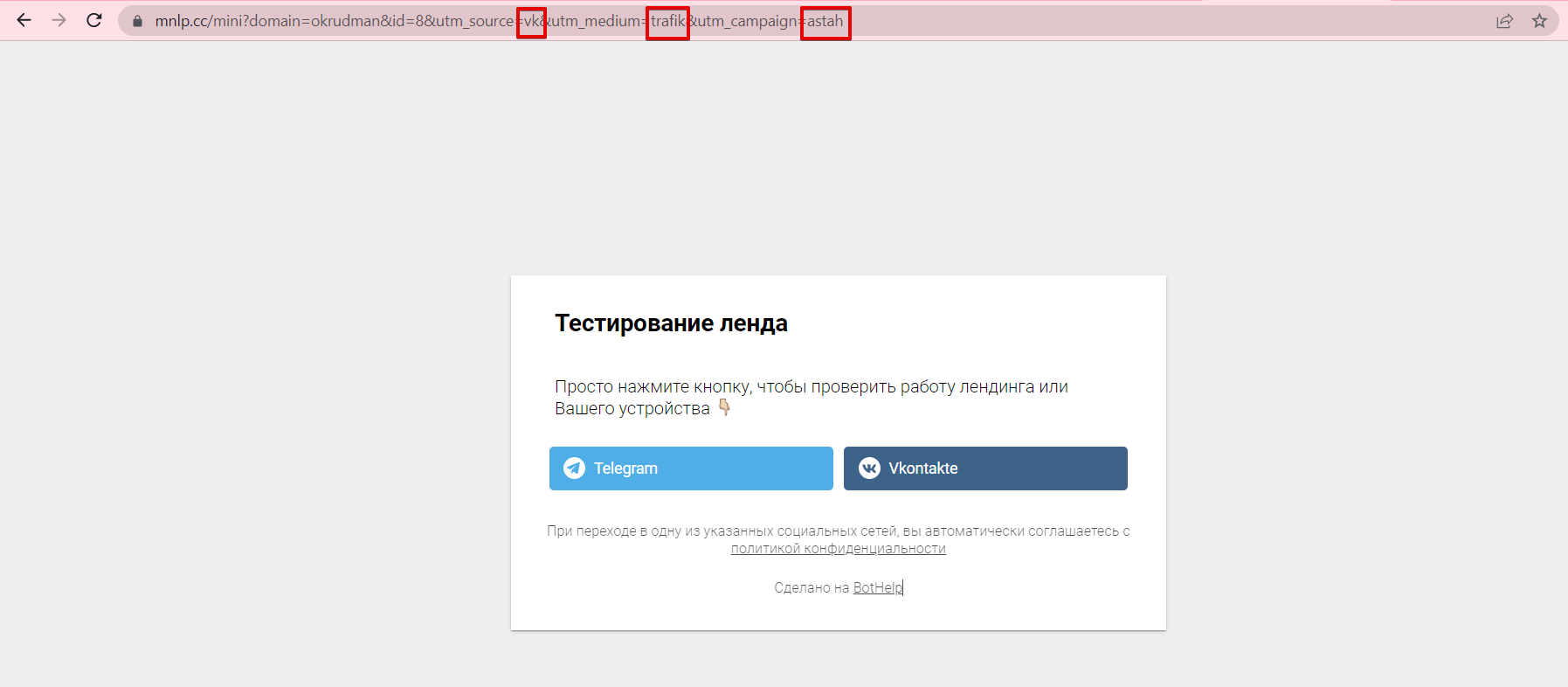
Unlike permanent UTM tags, dynamic ones require you to insert a parameter that will pull values from a specific ad.
Example : https://mnlp.cc/mini?domain=okrudman&id=8&utm_source={campaign_name}&utm_medium={ad_id}&utm_campaign={campaign_id}
We get the link : https://mnlp.cc/mini?domain=okrudman&id=8&utm_source=Метка&utm_medium=126673777&utm_campaign=1024547721
Where:
Tags - Campaign name
126673777 - Ad ID
1024547721 - Campaign ID
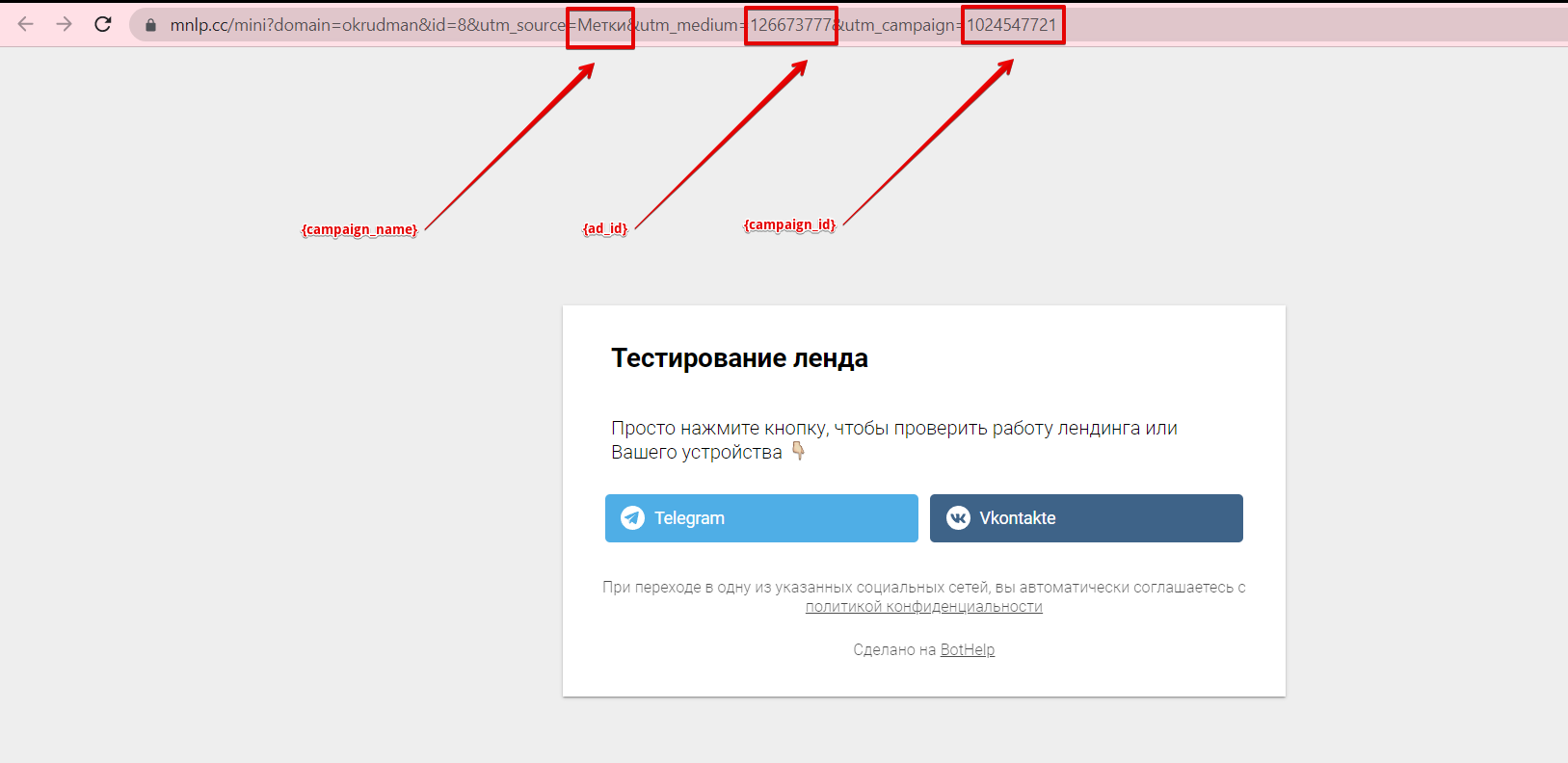
3. Track your followers
Using dynamic UTM tags will significantly save your work time.
The same link can be used in all advertisements, even if there are more than 100 of them.
There is no need to come up with a new permanent UTM tag every time.

You will always know through which particular ad the subscriber came to you.
In the search line in the advertising account (Ctrl+F) you can find the desired ad by values.
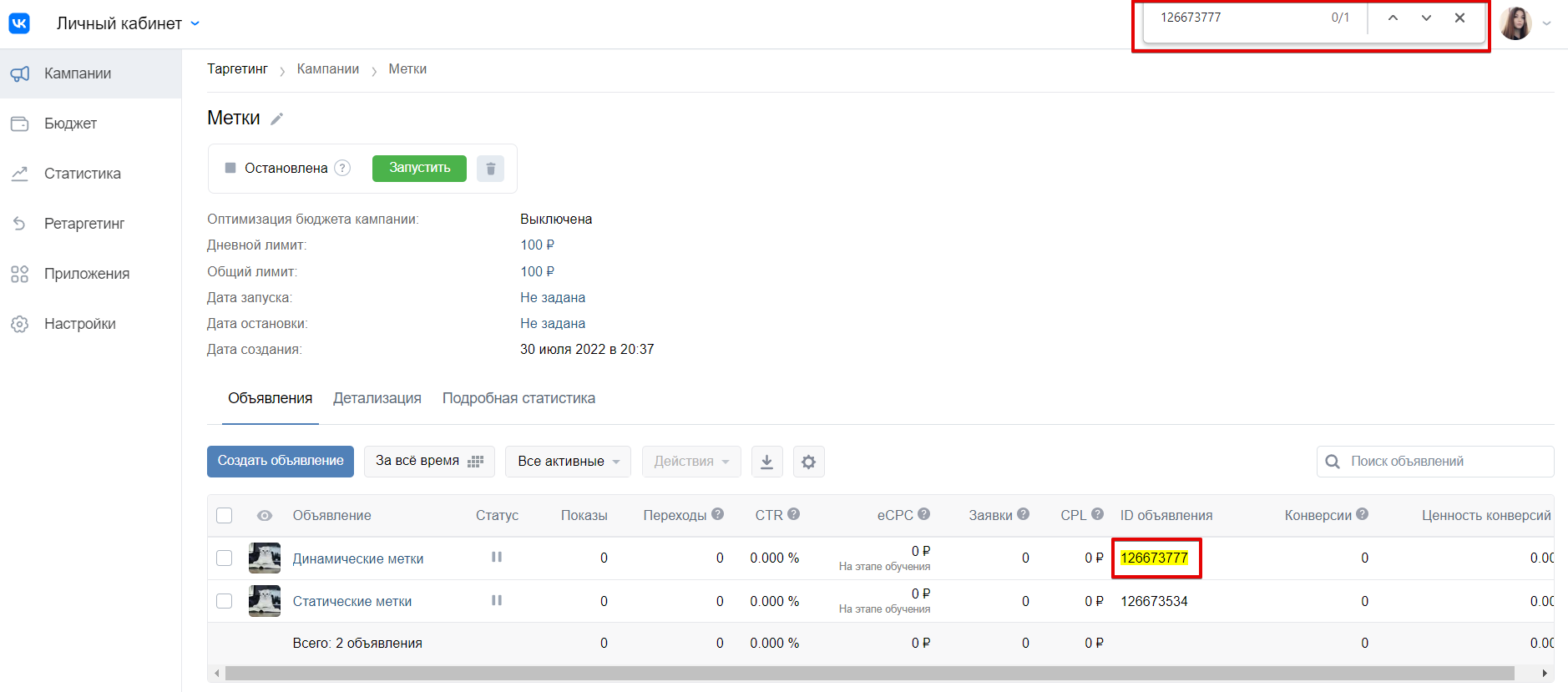
If the name of the advertising campaign is written in Cyrillic, then the UTM tag will be saved in the subscriber's profile in BotHelp in Russian:
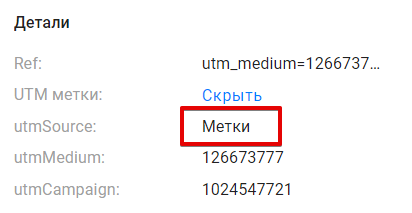
If you have not found the answer to your question, ask us in the chat inside your account or write to BotHelpSupportBot or to hello@bothelp.io
Get 14 days of full functionality of the platform for creating mailings, autofunnels and chatbots BotHelp.